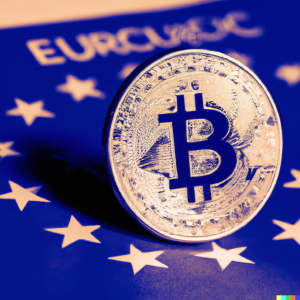
European Union’s Bold Step Towards Regulating the Digital Financial Landscape
Introduction
In a rapidly evolving digital landscape, the European Union (EU) has taken a decisive step towards regulating digital finance with the introduction of the Markets in Crypto-Assets (MICA) directive. This landmark legislation aims to establish a comprehensive regulatory framework for cryptocurrencies, stablecoins, and other digital assets within the EU. The MICA directive represents a significant milestone in the journey to ensure investor protection, market integrity, and foster innovation in the digital financial sector.
The Need for Regulation
The exponential growth of digital finance has presented both opportunities and challenges for policymakers around the world. While digital assets have the potential to revolutionize traditional finance and foster economic growth, they also carry inherent risks, including market volatility, potential for fraud, and money laundering.
Recognizing the need for regulation, the EU has taken a proactive stance to establish clear rules and protect investors in the digital financial space. The MICA directive aims to bring transparency, stability, and legal certainty to this rapidly expanding market.
Key Objectives of the MICA Directive
- Investor Protection: The MICA directive focuses on safeguarding investors by establishing clear rules and requirements for issuers, service providers, and intermediaries operating within the digital finance sector. It sets standards for transparency, disclosure, and consumer protection to ensure that investors are adequately informed and can make informed decisions.
- Market Integrity: The directive aims to promote market integrity by tackling market abuse, insider trading, and other illicit activities associated with digital finance. It establishes robust anti-money laundering (AML) and counter-terrorism financing (CTF) measures to prevent financial crimes and maintain the integrity of the EU’s financial system.
- Innovation and Competitiveness: While regulation is essential, the MICA directive also seeks to foster innovation and competitiveness within the EU’s digital finance sector. By providing legal clarity and a level playing field, it aims to encourage responsible innovation, allowing legitimate players to thrive while protecting against potential risks.
Key Provisions of the MICA Directive
- Classification and Authorization: The MICA directive introduces a classification framework for crypto-assets, differentiating between three types: electronic money tokens, asset-referenced tokens, and investment tokens. Each category comes with specific requirements, such as authorization, capital requirements, and investor protection measures.
- Operating Conditions: The directive imposes stringent operating conditions for digital finance service providers, including licensing requirements, conduct of business rules, capital adequacy, and cybersecurity standards. These measures aim to enhance consumer protection and ensure the reliability and security of digital financial services.
- Issuance and Disclosure: MICA mandates clear and comprehensive disclosure requirements for issuers of crypto-assets, ensuring that investors receive accurate and relevant information. This includes detailed prospectuses and regular financial reporting, strengthening transparency and investor confidence.
- Market Infrastructure: The directive addresses the regulatory oversight of trading platforms, crypto-asset custodians, and other infrastructure providers. It establishes regulatory requirements for these entities, including operational resilience, governance arrangements, and safeguarding of client assets.
Conclusion
The introduction of the MICA directive represents a significant milestone in the EU’s efforts to regulate the digital finance sector effectively. By striking a balance between investor protection, market integrity, and innovation, the directive sets a clear path forward for the responsible development of digital finance within the European Union. As other jurisdictions worldwide grapple with similar challenges, the EU’s comprehensive regulatory framework can serve as a blueprint for fostering a robust and secure digital financial ecosystem globally.





